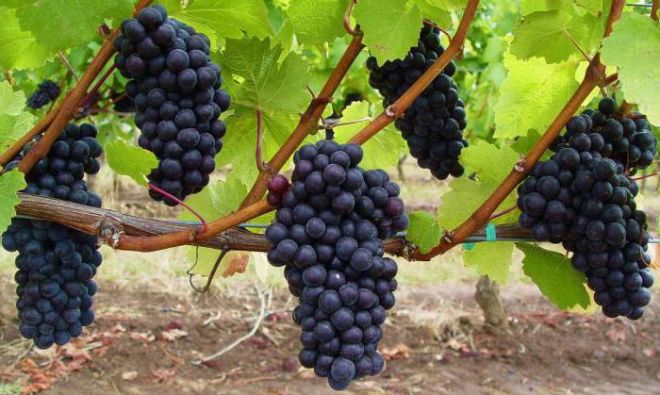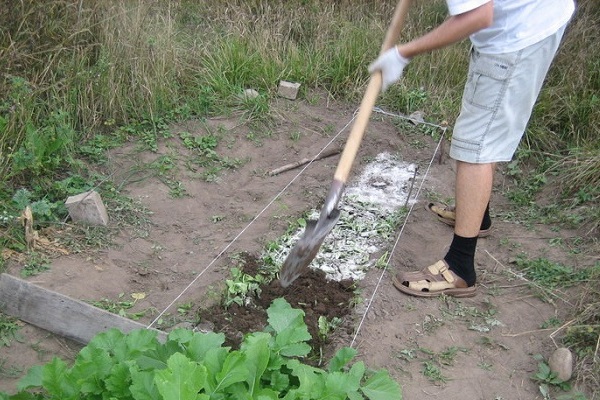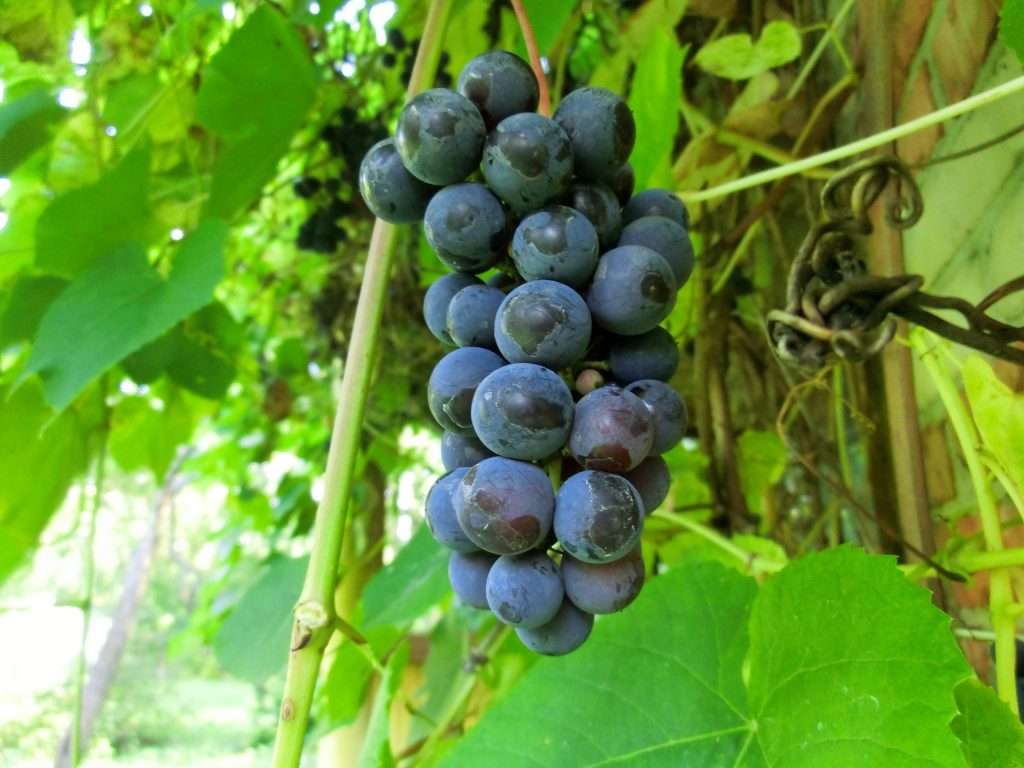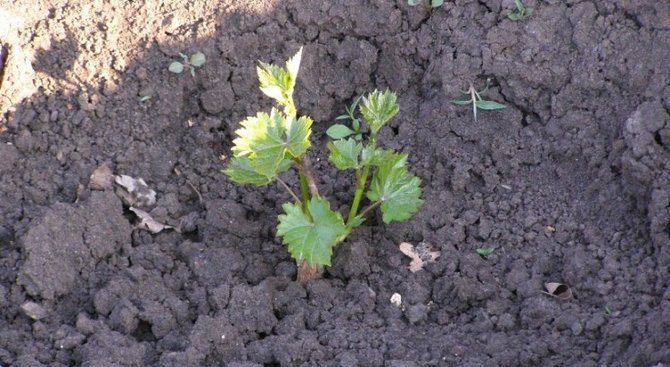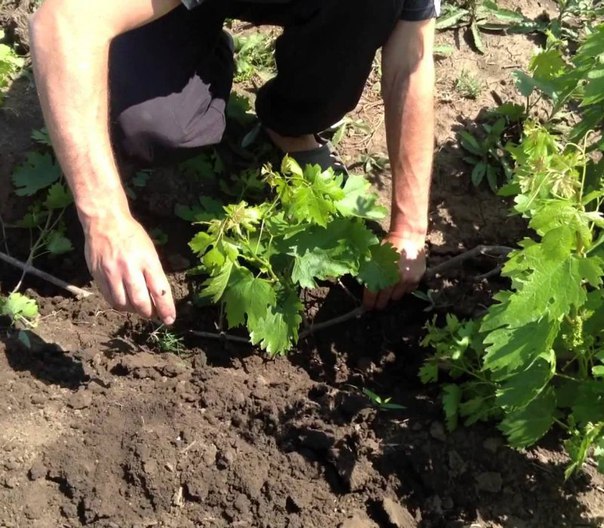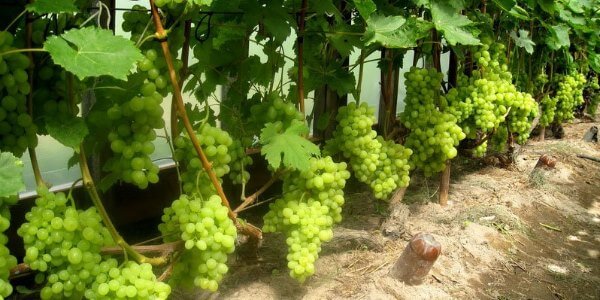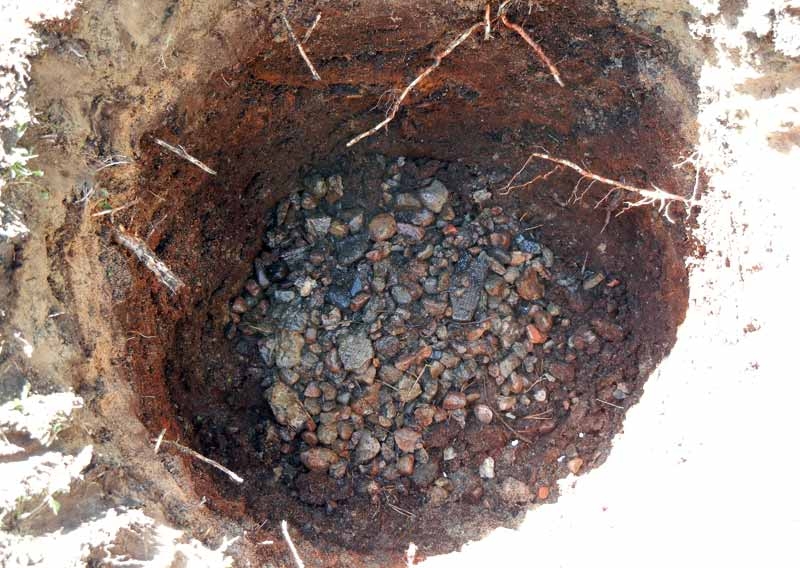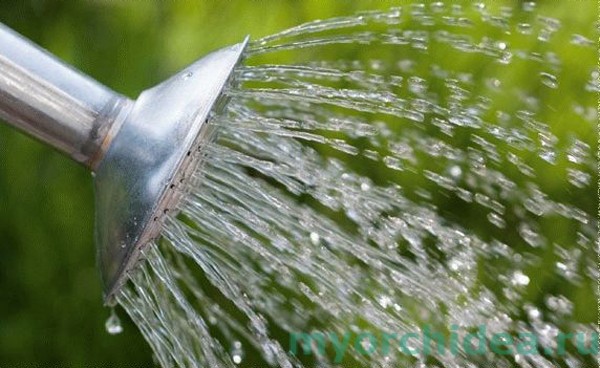Content:
Russia occupies a large territory. It is divided into regions, each of which has a completely different climate that must be taken into account when growing grapes. Now many are interested in planting grapes in the middle lane for beginners. How is this part of the country different from others? What features of growing a crop should be taken into account?
What is the difference between the middle lane
Everyone knows that grapes are a thermophilic culture, most often they can be found in the south of the country. The main conditions for comfortable plant growth are warmth, plenty of sun, moisture and fertile soil. For successful cultivation in central Russia, timely pruning of leaves and branches is a prerequisite.
The climate in the regions located in the middle zone of the country is temperate continental, which provides heat in summer and moderate frosts in winter. The flat terrain is conducive to the reign of winds that bring cold. For this reason, grapes have not grown here for many years. Today, with proper care, this plant is planted in summer cottages.
The culture requires that there is a lot of humus in the soil, since a large and powerful bush grows, which is able to climb with its branches on the wall of a multi-storey building or completely cover the gazebo.
It is only in central Russia that it is difficult to create such conditions for a plant. Before planting grape seedlings, you need to analyze the soil and determine how much humus it contains. In addition, it is necessary to find out how quickly the soil mineralization occurs, and whether the plant can develop under these conditions.
The organic remains of other plants are humus. They become food for grapes. But if the bush still does not grow, then you need to pay attention to the acidity and alkalinity of the soil.
In the regions of the middle lane, when growing grapes, it is very important to mulch. This process will be the key to a good harvest. Since the cold wind and rains, together with loosening the soil, do not create comfortable growing conditions, but, on the contrary, dry out the soil and wash out all minerals useful for grapes from it. Therefore, fertilization is only welcome here.
Step-by-step instructions for growing grapes
Beginners need to follow all the steps of the step-by-step instructions, only in this case they will succeed, and a good harvest of ripe grape clusters will take place. The most important thing for a beginner to do:
- decide on the choice of the variety;
- choose the right place for landing;
- prepare the soil according to all the rules;
- build a structure that will serve as a support for a young seedling;
- plant a vine;
- timely water the plant;
- form a bush;
- cover the culture at night.
Many winegrowers and gardeners dream of growing a vineyard in central Russia. This can be done. The main conditions are the removal of the vine from the trellis and its shelter during the frost period. All this will eventually become commonplace and will not be difficult. The main thing is that you need to love your work.
Choosing a variety for planting in the middle lane
For growing grapes in central Russia, Michurin bred two varieties: Isabella and Lydia. But, unfortunately, the berries of these crops are too small, and besides, they have a very sour taste. Gardeners would like to grow something unusual on their site. Therefore, scientists have been working for a long time on the creation of frost-resistant varieties, which resulted in the following varieties of culture:
- Amber Samara;
- Delight;
- Muscat Tsikhmistrenko;
- Dessert Muscat;
- Aleshenkin;
- Crystal;
- Laura.
These varieties will delight the owners not only with green leaves, but also with amber, sweet berries that hang from the vines in clusters. In addition to the berries of light shades, there are grapes, the fruits of which are blue in color with a purple tint. These varieties include:
- Brother of Rapture;
- Agat Donskoy;
- Early purple;
- Cardinal;
- Kishmish is unique;
- Codryanka.
What you need to know about planting grapes
A high yield of grapes depends on how correctly the place for planting was chosen. It should be well lit by the sun's rays and at the same time have protection from the winds from the north side. The soil also plays an important role in the good growth and fruiting of the grape bush. Drainage is an important feature during planting. The rows of the vineyard should be located from the south to the north.
If the site has slopes, then plant the vine from the south side. Thus, a natural protection from sharp northern gusts of wind will be created. If there is no way to plant on the southern side, it is recommended to put a high fence around the vineyard - at least two meters high.
You also need to plant seedlings in the ground, following the rules. It is possible to plant in sandy soil using a trench; in clay areas it is best to make high beds. Because in this case, groundwater can be located close to the surface.
The soil for planting is prepared in advance. To do this, it is necessary to add lime to the soil in two or even three weeks. Thus, the acidity will be reduced. Then deep plowing of the soil is carried out, organic fertilizers are applied in the form of manure or compost. One bucket of fertilizers is needed for one hundred square meters. In addition, mineral fertilizers are applied.
When the vineyard area is ready, you need to take care of the support for the vine. In the designated rows for planting, pillars of wood are driven in, the height of which is at least three meters. The depth to which you need to drive them should be at least sixty centimeters. This will ensure the stability of the structure.
Wire is stretched between the posts in several rows. The first row is made at a height of forty centimeters, the subsequent ones are pulled every thirty centimeters. This will become the support for the vine in the future.
Planting a grape seedling
When planting grapes in spring with seedlings in the middle lane, there are still some secrets. First of all, you need to choose varieties that are early ripening. Compared to the southern regions of the country, where planting vines can be done during the period from October to March, in the northern regions, seedlings are planted only in early spring, at a time when the buds are not yet blooming. The best period will be the first decade of May.
If instead of a support there is a high fence or wall, then you need to retreat from it at least forty centimeters. The distance between plants should be one meter and twenty centimeters. If an open space is set aside for a vineyard, then the plants should grow one and a half meters from each other. The rows are made at a distance of two meters.
Reproduction of grapes occurs in several ways:
- Using the seed as a seed;
- Using the graft method;
- Grafting a plant;
- By making layering.
The most common is cuttings.
If grafted seedlings are selected, then the place where the graft has grown together must be left above the soil surface. After that, the seedling is tied to a support, the root zone is abundantly watered and mulched with humus or dry manure. Thus, the soil will not dry out, and weeds will not grow in the root zone.
In addition, for planting seedlings, you can build beds, which are strengthened with plastic bottles. They are dug into the ground with their bottoms up. The bed rises at least a quarter of a meter. Thanks to this planting method, the grower provides heat to the roots, so that the berries ripen faster.
In order to plant the planting material, you need to dig holes, at the bottom of which drainage is laid. Pebbles or broken bricks are great. In addition, you can add a layer of river sand. It will make the soil much lighter. Fertile soil is prepared from a mixture of manure, humus, superphosphate and earth. Thanks to these preparations, the plant will begin bearing fruit within three years after planting.
They begin to form a bush immediately after the culture takes root. You need to cut off shoots that have grown throughout the year. If the vine is thin, then very few buds should be left on it. For example, on a shoot that is ten millimeters thick, no more than ten buds should be left. If the thickness is less, then the kidneys should remain smaller.
In spring, new shoots will grow from them, which will be much stronger than the previous ones. Pruning is recommended twice a year. First time in autumn. During this period, weak and damaged shoots are removed. In the spring - frozen and damaged vines. Additionally, grapes are formed.
As soon as the first frosts hit, the vine must be removed from the support, the remaining leaves must be collected, the vine must be carefully tied and put on the ground. The root part of the vine is spud. The grafted trunks are covered with earth in such a way as to completely cover the vaccination site.
When the frosts intensify, you need to cover the vine as well. The easiest way is to use spruce branches. There are varieties that winter comfortably under such a shelter. You can also use a non-woven material to cover the vine. Sugril is perfect. With this material, you need to wrap the vine, lay it on the ground and cover it with roofing material.
After the snow melts, the grapes must be opened, the damaged branches cut off and tied to a support.
Vineyard care
Agrotechnology of viticulture consists in cultivating the soil where grapes are going to be grown. In order for a culture to bear fruit, it must be regularly maintained. It consists in cultivating, watering and applying mineral fertilizers. In the fall, before covering the plant, you need to dig up the root zone and apply fertilizers in parallel. Under one bush of grapes you need to make:
- at least ten kilograms of manure;
- fifty grams of saltpeter;
- fifty grams of potassium salt;
- one hundred grams of superphosphate.
It is necessary to revitalize the plant systematically throughout the entire period of growth and development of the culture. Before the plant begins to bloom, it needs to be watered regularly. In addition, liquid fertilizers are applied during watering. To do this, twenty grams of superphosphate and ten grams of ammonium nitrate are dissolved in water. Such fertilizer should be applied only at the root. To do this, you can use the drainage system.
You also need to periodically loosen the root zone and remove weeds. Such procedures are performed at least seven times throughout the season. Care is especially important during the period when the grapes begin to bloom.
In order to water young seedlings, special irrigation structures are erected. For this purpose, plastic bottles with a volume of two or five liters are used. They are buried in the ground downside down and the bottom is cut off from them. Before you bury the bottles, do not forget to unscrew the caps from them.Thanks to such a structure, you can water the plant.
After two or three years, the plastic bottles are replaced with asbestos pipes. This applies to table grape varieties. If technical varieties are grown, then they do not need watering. Their root system is capable of producing water for itself on its own. Therefore, the arbitrary irrigation system is removed.
Growing grapes in a greenhouse
To have fresh grapes on the table, you can use the greenhouse to grow it. Due to the fact that the plant will be in permanent shelter, it will be protected from unexpected frosts in spring and autumn.
Greenhouse grapes grow larger and sweeter. The culture differs from the one grown in the open field by its high yield. This happens for the following reasons:
- The microclimate of the greenhouse is ideal for such a whimsical plant as grapes. Even when the room is not heated, the air temperature rises by more than three or even four degrees.
- The grapes grow more intensively, flowering begins earlier, the fruits are set much faster, which allows it to ripen ahead of time.
- With the help of a greenhouse, the vine is protected from frost in winter.
It is not so easy to grow grapes in the harsh conditions of the North, but if you adhere to all the rules and technologies, then this is a task that is not difficult to solve. In addition, every year more and more frost-resistant grape varieties appear, which even a beginner can handle planting. The main thing to do in order to get a good harvest is to take good care of the plant in a timely manner, using this detailed lesson.
